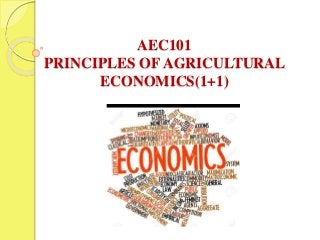
Characteristics of different economic systems
- 2. CHARACTERISTICS OF DIFFERENT ECONOMIC SYSTEMS
- 3. ECONOMIC SYSTEM: An economic system is a production and exchange of goods and services as well as allocation of resources in a society. It includes the combination of the various institutions, agencies, entities and consumers that comprise the economic structure of a given community.
- 4. CENTRAL ECONOMIC PROBLEMS What goods/services will be produced? How will goods/services be produced? Who will consume the good/services? The way how the country answers these questions determines its economic system.
- 5. TYPES OF ECONOMIC SYSTEM Traditional Economy Command Economy(socialism) Market Economy(capitalism) Mixed Economy
- 6. 1.TRADITIONAL ECONOMIC SYSTEM A traditional economic system is the best place to start because it is, quite literally, the most traditional and ancient type of economy in the world. Traditional economies would never, ever, in a million years see the type of profit or surplus that results from a market or mixed economy.
- 7. 2.COMMAND ECONOMIC SYSTEM In terms of economic advancement, the command economic system is the next step up from a traditional economy. The most notable feature of a command economy is that a large part of the economic system is controlled by a centralized power; often, a federal government
- 8. 3.MARKET ECONOMIC SYSTEM A market economy is very similar to a free market. The government does not control vital resources, valuable goods or any other major segment of the economy. In this way, organizations run by the people determine how the economy runs, how supply is generated, what demands are necessary, etc.
- 9. 4.MIXED ECONOMIC SYSTEM A mixed economic system (also known as a Dual Economy) is just like it sounds (a combination of economic systems), but it primarily refers to a mixture of a market and command economy.
- 10. CHARACTERISTICS: TRADITIONAL ECONOMIC SYSTEM: 1. Goes by religious beliefs and history. 2. Do not change a lot 3. Basic technologies 4. Use minimum technologies 5. Barter/Trade 6. Everyone has a certain role 7. People only use/supply what they need most of the time 8. Large relation to poverty 9. Under developed
- 11. COMMAND ECONOMIC SYSTEM The government or other central authority makes decisions and determines how resources will be used. Change can occur relatively easily. There is little individual freedom. There is no competition. Businesses are not run to create a profit. Consumers have few chooses in the market place. Factories are concerned with quotas.
- 12. MARKET ECONOMIC SYSTEM Resources are owned and controlled by individuals. Economic decisions are made by individuals competing to earn profits. Individual freedom is considered very important. Economic decisions are made by the basic principles of supply and demand. Profit is the motive for increasing work rather than quotas.
- 13. MIXED ECONOMIC SYSTEM Government and individuals share the decision making process. Government guides and regulates production of goods and services offered. Individuals own means of production. Protects consumers and workers from unfair policies. Most effective economy for providing goods and services.
- 14. COMPARISON OF THREE ECONOMIC SYSTEMS CHARACTERS SOCIALISM CAPITALISM MIXED ECONOMY Ownership and control Government owns the means of production Business/Indivi- duals control means of production Business owns most resources and determine what and how to produce but the government regulates certain industries Karl Marx (Father of Socialism) Adam Smith (Emphasized Capitalism) J.M.Keyens(Emphasize d the importance of Mixed Economy)
- 15. CHARACTERS SOCIALISM CAPITALISM MIXED ECONOMY Standard of living Goal is equal for everybody,enforced by the government High standard of living and economic security High standard of living and economic security Who decides what to produce? Government makes all economic decisions Business base decisions on supply and demand and free enterprise(PRICE) Business decisions and some degree of government control Who decides how to produce? Government Business Business but govt. regulates
- 16. CHARACTERS SOCIALISM CAPITALISM MIXED ECONOMY To whom the goods and services are produced? Whoever the government decides to give, we have to give To the consumers To the consumers Advantages Greater economic welfare No fluctuations in business cycle Less interference of government Efficient allocation of resources Advantages of free initiative and enterprise Rapid economic development Examples Cuba, North Korea, Former Soviet Union Australia’s Economy Brazil, Mexico, Canda, UK, US
